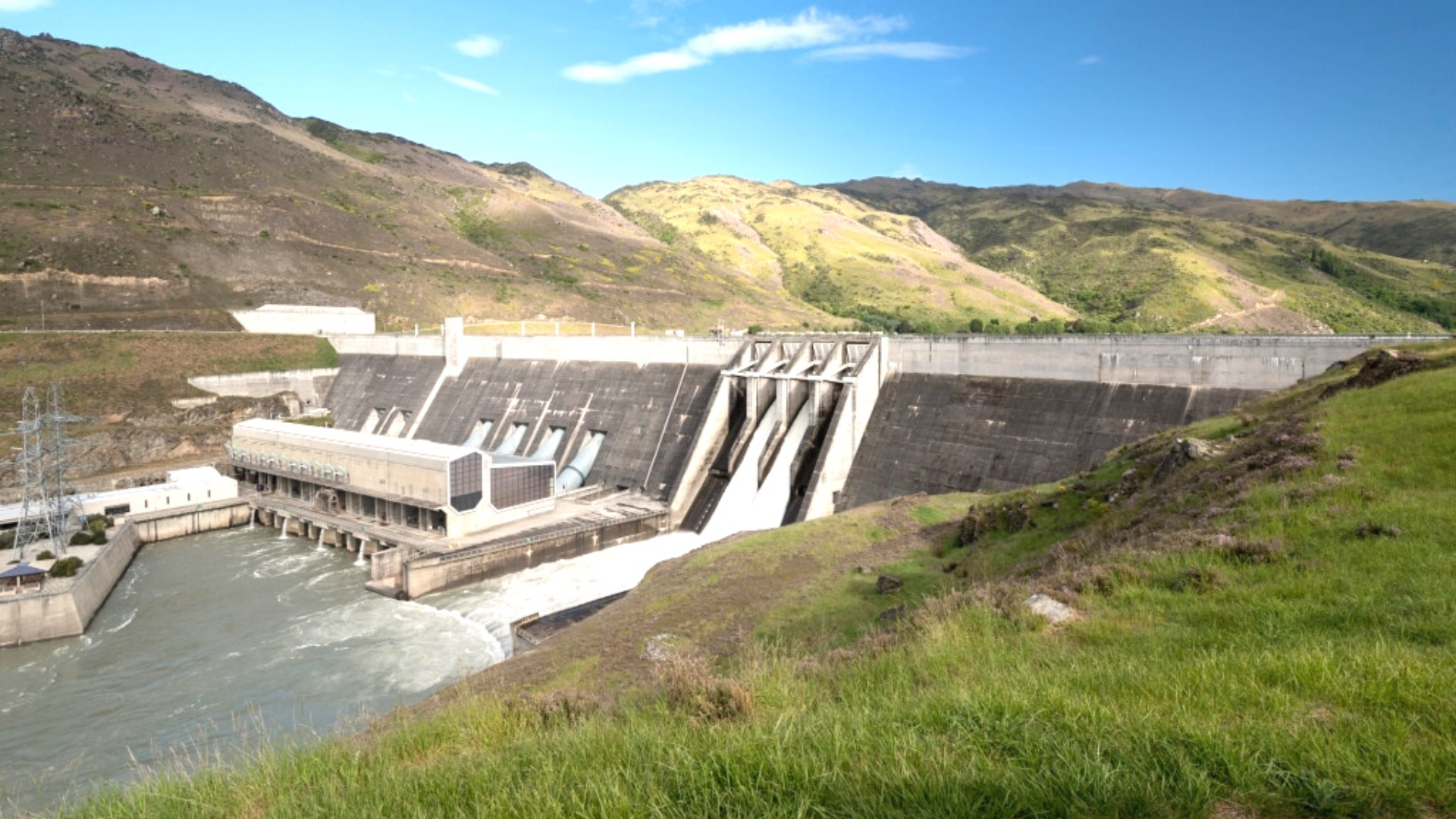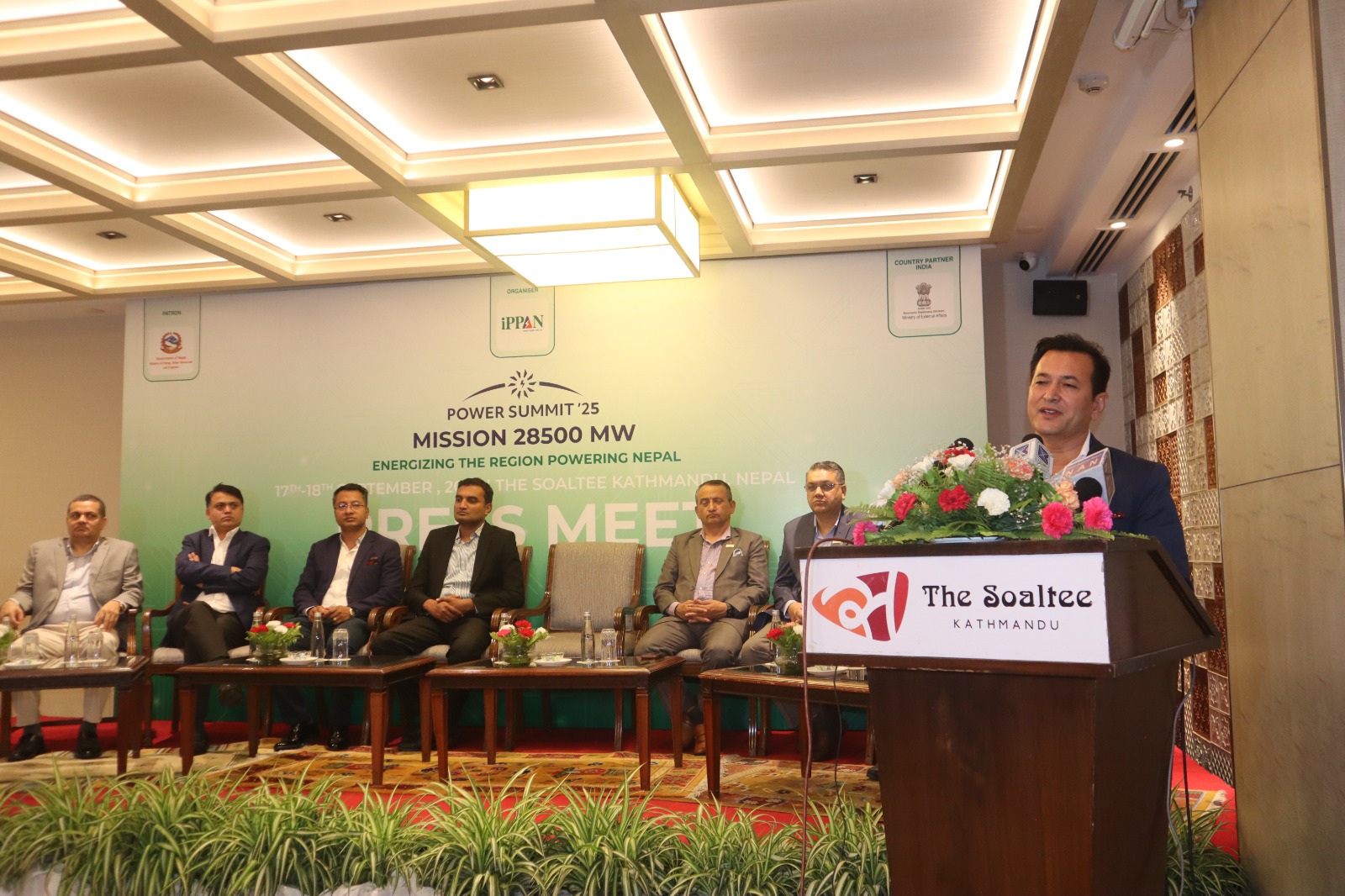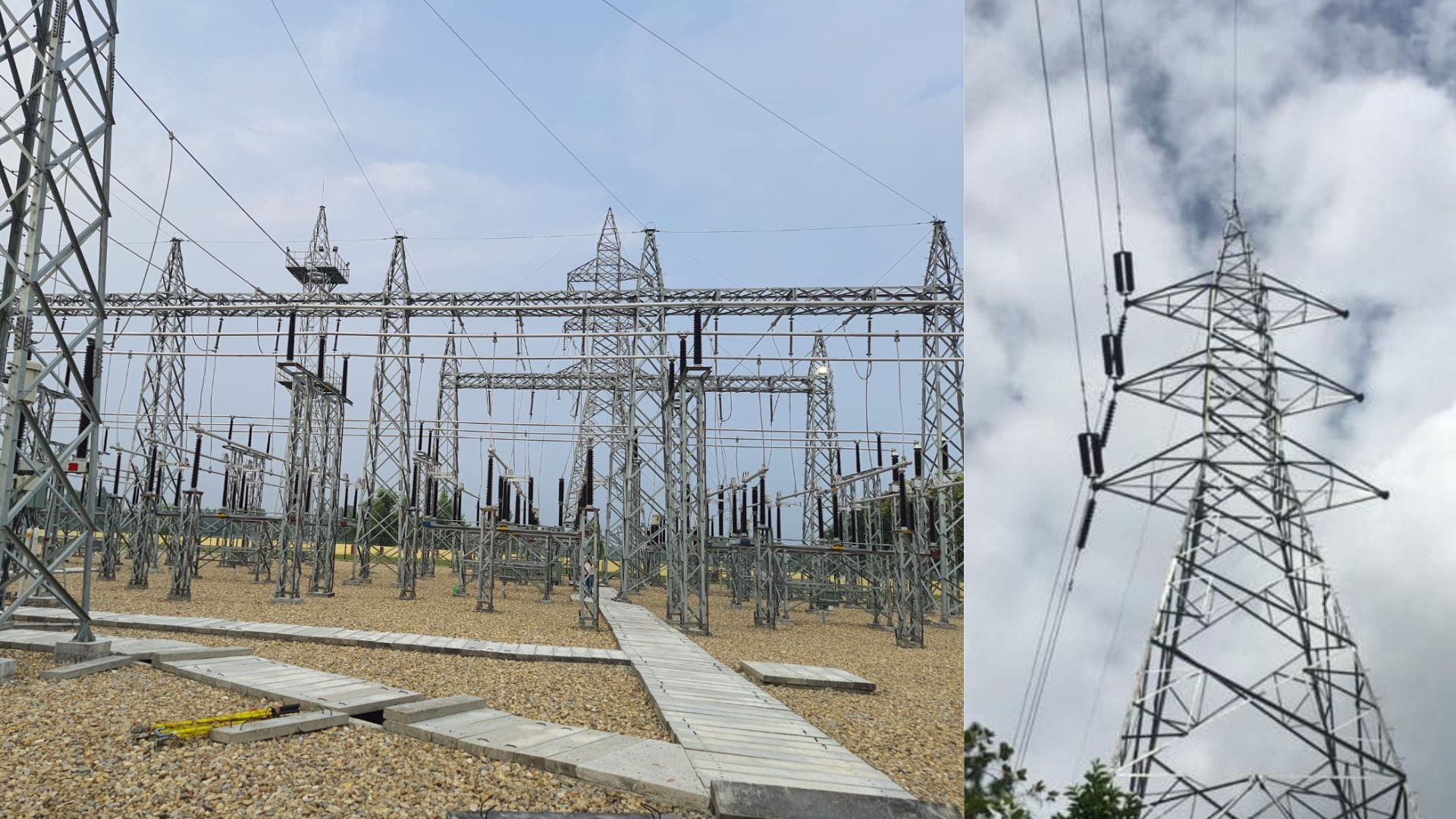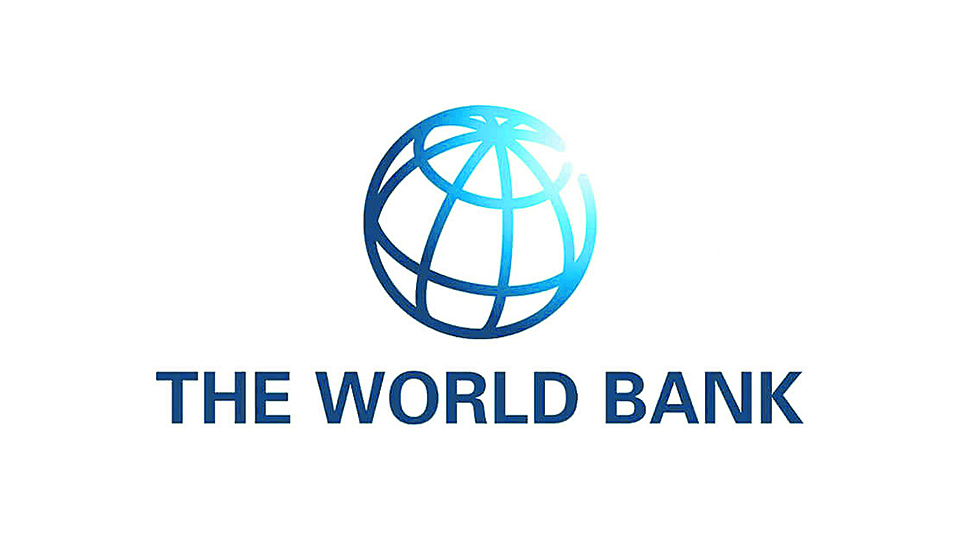
KATHMANDU: In winter, it usually rains an average of 65 mm, but this year only 12 mm of rain fell. Not only in winter, but it also rained heavily all at once in monsoon. According to the Department of Water and Meteorology, this year there has been a drought in the winter, while in monsoon it unusually rains within 30 to 40 minutes. Such rain falls at the beginning, then stops and falls again. This has brought unusual changes in both the distribution and flow of river water compared to before.
Similarly, in the Power Purchase Agreement (PPA) signed by the Nepal Electricity Authority with the promoters, there is a provision that the promoter can declare the availability of energy less up to 90 percent (availability declaration).
Out of that, 90 percent of the production, i.e. less than 80 percent, provision made of fine. But according to that, projects with a capacity of less than 10 megawatts could not produce. In 2072, after the Ministry of Energy introduced the Energy Crisis Action Plan, the authority gave a 50 percent discount on it. That is, only those who produce less than 40 percent are fine, but there were more than two dozen projects, which could not produce even that.
There was a movement to completely remove the hydrology penalty and finally, the authority was forced to work as per the demand of the movement. What it shows is that problems are created by decreasing the flow of water in rivers. These are some representative examples of climate change affecting hydropower.
Due to the effects of climate change, there is a need to radically change the traditional system of projecting electricity generation for 25/30 years. Based on climate change, a situation has been created where electricity production, demand, and supply need to be balanced in a short period of time.
‘To move towards mitigating climate change, now we must move to forecast-based planning’

According to the Director General of the Water and Meteorology Department Kamal Ram Joshi, based on the forecast of weather and floods 3 days in advance, a situation has been created where to balance of hydropower production and its
If the weather and floods are predicted 72 hours in advance, then the power generation will be high, so the promoter should make a plan accordingly and the electricity authority will have to arrange demand and supply accordingly. He says, ‘Even in winter, if the water level drops, we should emphasize making plans accordingly. ‘Director General Joshi says that in order to move towards mitigating and accepting climate change, we should now go for forecast-based planning. His climate change concept is different.
“Now it is felt that due to climate change, there has been a change in the components of the climate,” he said. However, it remains to be seen what changes have been made in the long term by integrating the changes that have come about. To say that there has been a change can be concluded only by analyzing the data of at least 20 to 30 years. According to Director General Joshi, the measurement system has also been changed.
Previously, it was measured how much rain fell in 24 hours, but now it is seen how much rain fell at what time or for how long. The department has been collecting water data at intervals of 10 minutes for the last 7 years. It is used to know how much rain has fallen in which place and the distribution of water throughout the country.
‘Studies have also shown the impacts of climate in the high Himalayan region’

Climate expert Vijay Singh of the United Nations Federal Program (UNDP) says that although the impact of climate change has been seen in hydropower projects, there has not been enough study.
“Studies have also shown the effect of climate in the high Himalayan region,” he said. The spring of clean water is in the high Himalayan region, besides that, the process of snow melting has also become fast. This will have an impact on flooding and hydropower projects and irrigation projects in the lower coastal areas.’
Singh emphasizes the need to develop an early warning system to minimize the effects of climate. This is especially important in areas with large river systems. As an example, the United Nations Federal Program has also installed such a system in Hemza in Kaski and Chhorolpa Lake in Dolakha. This will help not only the people in the lower coastal areas but also the hydropower projects.
The problem of not being able to operate at the capacity that was designed for the small hydropower project in the high Himalayan region, which UNDP assisted in the construction, has also been seen. Especially in winter, when the water flow decreases, it is necessary to operate at low capacity.
Production fell by 20 percent
‘Due to the effects of climate change, the production of hydropower projects has sometimes increased and sometimes decreased’

Managing Director of Electricity Authority Kulman Ghising says that the impact of climate change on hydropower projects is increasing. According to him, the decline in electricity production is due to the effects of climate change.”Due to the effects of climate change, the production of hydropower projects has sometimes increased and sometimes decreased,” he said.
He gave an example of the Middle Marsyandi hydropower project and said that the amount of electricity produced by the project during the dry season last year was 20 percent less than that this year. Taking this as an example, Executive Director Ghising says that the same situation is seen in all the hydropower plants. Along with the decrease in the production of the rivers that come from melting snow, the production of the hydroelectric projects built on the basis of the Mahabharata’s resources is also decreasing.
Showing the signs of climate change
A study has shown that Nepal occupies about 2.2 percent of the total clean water resources worldwide. There are more than 6 thousand rivers here. Therefore, Nepal is among the countries with the most hydropower potential in the world.
Nepal receives an average of 6.8 hours of sunshine per day. This is usually more time in the sun. Because of the Agga hills and mountains, the wind velocity here is strong. Due to these reasons, Nepal has the potential to produce a maximum amount of hydroelectricity, solar, and wind energy. However, the signs of risks that can be created due to global rising temperatures and changing climate are beginning to be seen. Due to the lack of sufficient studies in Nepal, it is not yet possible to say.
‘Irregular rains in monsoons, increased temperature, and no rains in winters have started to be speculated as climate change’

According to Kumar Pandey, Adviser of IPPAN, the necessary study has not been done to determine the effect of climate on the hydropower sector. He said that it would be difficult to prove that there is an effect of climate on the basis of the fact that there was no rain in the winter or floods in the rainy season in the area of hydropower project construction.
In the country, the production of hydropower projects built 35 to 40 years ago has not seen a big drop on average. However, we are experiencing a trend of some years being more than the average and some years being less.
He says, ‘Irregular rains in monsoons, increased temperature, no rains in winters have started to be speculated as climate change. However, it is too hasty to conclude that the climate is the cause.’
On the other hand, it is not the case that climate change is nothing. Climate change will certainly affect infrastructure projects. If we focus on hydropower projects, it does not seem to have a big impact on small projects. However, it is estimated that large and reservoir projects will be affected a lot. In such projects, there may be a problem of overflowing dams and accumulation of silt due to heavy rains during monsoons. Apart from that, there will be an increase in investment. For example, in order to extend the life of the reservoir project, the dam will have to be made bigger. Pandey says that investment will automatically increase as soon as a big dam is built.
‘I don’t think there is a big challenge in the hydropower sector right now’

Director General of the Department of Electricity Development, Chiranjeevi Chatout, said that since Nepal is a geographically vulnerable region, the impact of climate change is natural. However, he believes that the dire situation has not yet come. Various studies from around the world have published reports that this or that change has occurred. Therefore, climate change cannot be denied. ‘I don’t think there is a big challenge in the hydropower sector right now,’ he said.
During the study phase of the hydropower project, studies and projections are made for a long period of time. The meaning of doing this is by paying attention to the fact that different types of changes will come. However, Director General Chatout says that if the rains start in Baisakh and there is no rain even until saun, it is not logical to link it with climate change.”It doesn’t seem like there will be a situation where all the water will dry up or production from the hydroelectric project will stop in a few years,” he said.
During the pre-feasibility or feasibility study stage of a hydropower project, it is said that the amount of electricity will be produced. After starting to produce the same amount of electricity, it is not produced. It is also seen links to the effects of climate change. Officials of the Power Development Department say that if the output of a project is studied by focusing only on one or two years, even if there is a difference if you look at the period of 20 to 30 years, you will not see any unusual difference.
Director General Chatout also presented an example of the Budhiganga hydroelectric project. Based on the data available by the department, it was found that around 3300 hours of Budhiganga are produced per year.4 years later, when the Trackbell Engineering Company conducted a study based on reality, it was found that 4,250 hours were produced per year. This showed that the water in the river had increased. It will also show a decrease instead of an increase in any other project. However, in general, there is no increasing or decreasing trend in all projects. Therefore, he says, it is difficult to say the impact of climate change until a similar trend is seen. He said that since the project has both decreasing and increasing trends, it cannot be said that it has a climate impact.
Role of Nepal in climate change
According to the Ministry of Forests and Environment, 1.9 million people in Nepal are at high risk of climate change. Whereas Nepal emits only 0.027 percent of the world’s greenhouse gases, the rest is produced by developed and developing countries. China’s share is 28 percent while India’s share is 6.55 percent. Nepal is not the main cause of the effects of climate change, but Nepal is at high risk of it. In Nepal, more than 85 percent of natural disasters occur due to water and weather alone.
Nepal can play a role in lobbying the world for its mitigation and reduction. The government has introduced a national climate change policy regarding climate change, which has also been given importance by the Sustainable Development Goals (SDGs) promoted by the United Nations. Along with this, a national adaptation plan has also been made in 2019. However, the implementation is not effective.

Nepal is also geographically at risk. With the melting of the snow, the estimation that the snow lake may erupt is made public through study reports released at different times. There is a possibility of huge damage to the hydropower projects due to the flood caused by the snow lake eruption. Similarly, the trend of more rain at the same time is also increasing.
Due to this, the hydropower projects designed with fixed production capacity will not be able to sustain, water will be wasted or the dam will be damaged and the annual production may also decrease.
Preparedness to protect from climate impacts
‘Construction of reservoir hydropower project is also necessary to minimize the impact of climate change’

The impact and effect of climate change today will not be too much to bear tomorrow. However, Dinesh Kumar Ghimire, Secretary of the Ministry of Energy, Water Resources and Irrigation, says that there is a need to move forward with long-term policies and programs to address the problems arising from this. “When the global temperature increase is not reduced, the snow melts, floods and landslides occur, there is a lot of water in the rivers, and if the temperature rises too much, there may be a problem of no snow in the Himalayas,” he said.
Generally, there is a trend of floods and landslides in the river at the beginning and then it becomes dry. However, there is no proven data that shows such an effect.” We don’t know when and what kind of problems will occur in the short-term, medium-term or long-term, so it is necessary to anticipate the possible risks and proceed with all three types of planning,” he said. Besides, it is time to bring climate adaptation and design up to date. Now load management also needs to be modified according to climate change. Alternative sources of water resources will also have to be managed and supplemented.
According to Secretary Ghimire, if there is a problem in the hydropower project due to the management of inter-agency related resources, the quality of electricity and other things should also be taken into account by using other sources.
In order to minimize the impact of climate change on hydropower production, it is necessary to switch to mixed energy production. According to Executive Director Ghisingh, a mixture of reservoir, semi-reservoir, and river flow projects should be used for production.”Construction of reservoir hydropower project is also necessary to minimize the impact of climate change,” he said. Apart from this, the Electricity Authority has already started a ‘pilot project’ to bring Nepal’s clean energy to customers through transmission lines, but also to use it in the form of green hydrogen.
There is a plan to operate green hydrogen, ammonia, and fertilizer factories using electricity. “Since the world is moving towards green infrastructure, it is necessary to proceed with the development and expansion of hydrogen after analyzing the possible effects of climate change.” Head of the Hydrogen Lab of Kathmandu University Dr. Viraj Thapa says According to the National Climate and Development Report 2022 published by the World Bank, Nepal can also contribute to the carbon reduction of its own and neighboring countries with high carbon emissions. The report shows that an average annual income of 200 million US dollars can be generated from electricity export in the period from 2022 to 2025.
Hydropower development will also provide Nepal with opportunities to enhance climate-friendly energy solutions such as electric transportation and green hydrogen. In order to be ready to use such opportunities, it is necessary to assess the impact of climate change on the flow of rivers, to invest in supporting infrastructure necessary for the growth of electricity exports, to involve the private sector in a more systematic manner and to work continuously with regional partners, the report stated. The situation is that Nepal will be able to export green hydrogen, ammonia, and chemical fertilizers by making the water of Nepal the source of all fuel.”If we can do this, we will not only bring the carbon emissions to zero, but we will be able to go from zero to (negative),” said Ghising, the executive director of the Electricity Authority.









